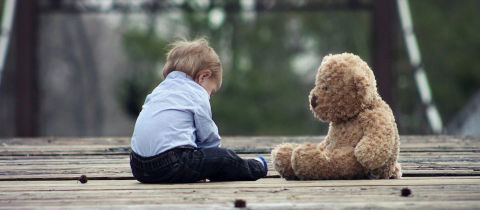We all know somebody who believes they can “feel” when the weather is going to change. Maybe it’s your co-worker calling for rain because an old sports injury has started to ache. Or your grandmother faithfully rubbing her knuckles in anticipation of an on-coming thunder storm. Many people seem to think that there is a relationship between joint pain and weather patterns. Over two thirds of people with rheumatic diseases (disorders affecting your joints) believe their pain precedes or is caused in part by the weather. So is it true? Can we really feel weather changes in our bodies or can it be just a coincidence?
There is actually no scientific consensus on this issue: researchers go back and forth between finding some significant relationship and no association at all. Some studies conclude that certain people respond to changes in pressure and temperature, while others have found that pressure has no effect, but humidity specifically in the morning does. So what gives? Why all the confusion? Well, joint pain is complicated, weather is a result of many interrelated variables, and pain is very hard to compare: so we’ve really got our work cut out for us with this question.
The most common theories argue that specifically humidity, temperature, precipitation, and barometric pressure (how much the air weighs) have some weak link to physiology. Many believe that the fluid lubricating our joints is sensitive to atmospheric pressure, so right before a storm when the air pressure changes, the amount of air compressing this internal fluid also changes and inflames sensitive joints. However, in contradiction, driving in a mountain range and riding an elevator are associated with greater changes in pressure then oncoming storms, but are not associated with joint pain.
In general, studies looking at this problem are very inconsistent. Weather is a bad variable to work with since we cannot control it. Thus any evidence found to back these claims, if any, is correlational – studies measure a person’s self-reported joint pain, then cross reference it with daily meteorological data: so days in which pain and changes in air pressure co-occur suggest a positive association. But no casual biological mechanism has been established to explain how these two co-occurring events affect each other if at all. In order to make a causal link, researchers would need to do invasive procedures on the joints of an arthritis patient while controlling for things like barometric pressure, temperature, and precipitation (which of course would be very difficult to control even in a simulated laboratory).
There is also a significant psychological influence since it’s impossible to “blind” these studies – you cannot ensure that participants are not consciously or unconsciously aware of the weather. For example, knowing that it’s raining outside usually puts people in a bad mood, bad moods make you more receptive to pain, thus it’s possible that your bad mood is mediating the effect between your pain and the weather change.
This is why many researchers have come to believe that cognitive and psychological, more so than physiological factors, can explain the perceived link. In the mid 90’s Amos Tversky, the famous cognitive psychologist, along with U of T’s Dr.Donald Redelmeier, published a study on why we believe that our joints are affected by the weather despite having no objective evidence to prove it. They attributed our poor judgment to a cognitive bias called “selective matching”: our natural tendency to see patterns in coincidences when it confirms our own hypothesis. For example, we readily notice when events affirm our beliefs, in this case throbbing joints on the day of a large thunderstorm. But we are terrible at noticing disconfirming evidence – like all the rainy days not accompanied by pain.
Although it’s very likely there are some psychological and cognitive factors at play, we cannot seem to do away with a bio-physiological explanation completely. However, even if we do find some casual link between rain and pain, not much can be done for arthritis sufferers anyway. After all, we are in no position to change the weather... yet.







